Predictions & Data for this entry
| Model: stx | climate: Cfb, Dfb, Dfc | migrate: | phylum: |
| COMPLETE = 3.0 | ecozone: THp | food: bxM, xiH | class: |
| MRE = 0.062 | habitat: 0iTg, 0iTht | gender: Dg | order: |
| SMSE = 0.008 | embryo: Tv | reprod: O | family: |
Zero-variate data
| Data | Observed | Predicted | (RE) | Unit | Description | Reference |
|---|---|---|---|---|---|---|
| tg | 21 | 20.98 | (0.0007534) | d | gestation time | WielSell1990 |
| tx | 13.7 | 14.46 | (0.05565) | d | time since birth at weaning | BoycBoyc1988 |
| tp | 13.7 | 14.46 | (0.05565) | d | time since birth at puberty | BoycBoyc1988 |
| Wwb | 1.43 | 1.392 | (0.02689) | g | wet weight at birth | BoycBoyc1988 |
| Wwx | 9 | 8.763 | (0.02632) | g | wet weight at weaning | Fran1956 |
| Wwp | 9 | 8.763 | (0.02632) | g | wet weight at puberty | Fran1956 |
| Wwi | 50 | 51.66 | (0.03321) | g | ultimate wet weight | Bale2007 |
| Ri | 0.04315 | 0.04215 | (0.02311) | #/d | maximum reprod rate | BoycBoyc1988 |
Uni- and bivariate data
| Data | Figure | Independent variable | Dependent variable | (RE) | Reference |
|---|---|---|---|---|---|
| tJO |  | time since birth | O_2 consumption | (0.06207) | DrozGore1972 |
| tJX | 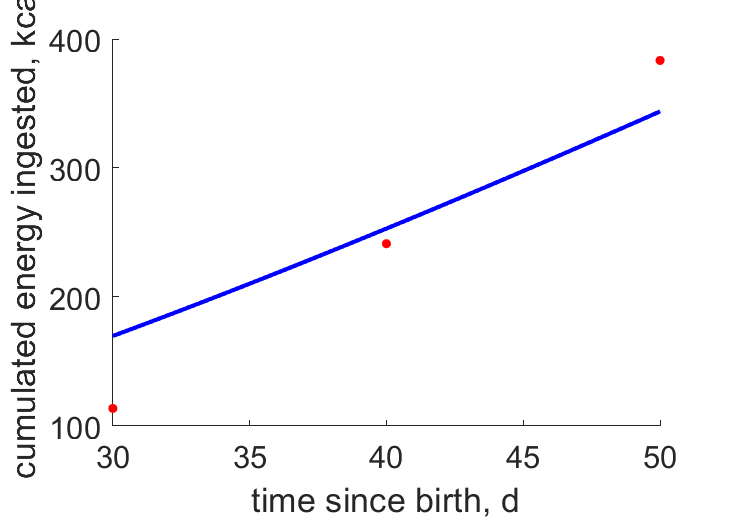 | time since birth | cumulated energy ingested | (0.1456) | DrozGore1972 |
| tL3 | 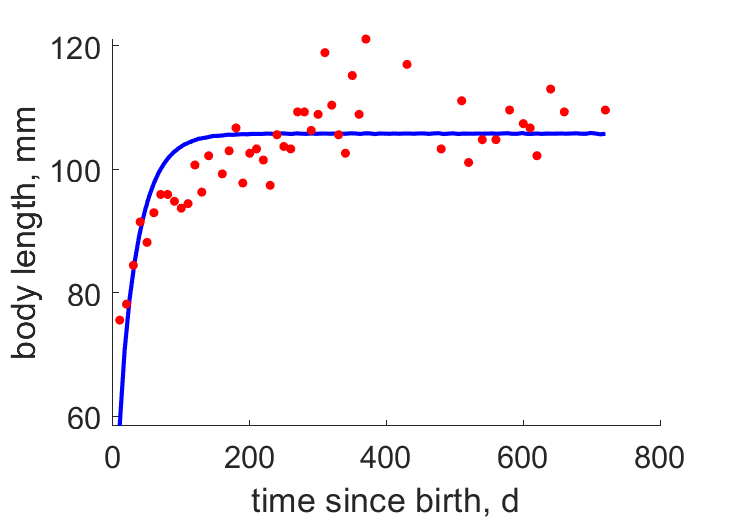 | time since birth | body length | (0.04747) | Bale2007 |
| tS | 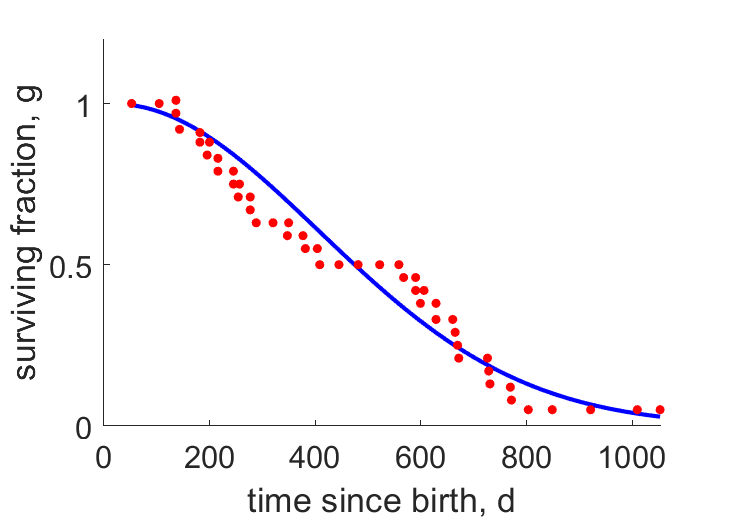 | time since birth | surviving fraction | (0.1177) | Grom2016 |
| tW | 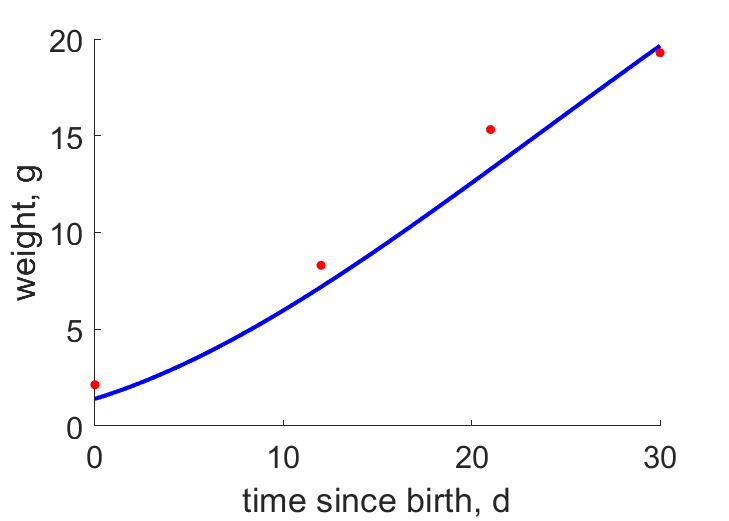 | time since birth | weight | (0.09469) | Grom2016 |
| tW2 | 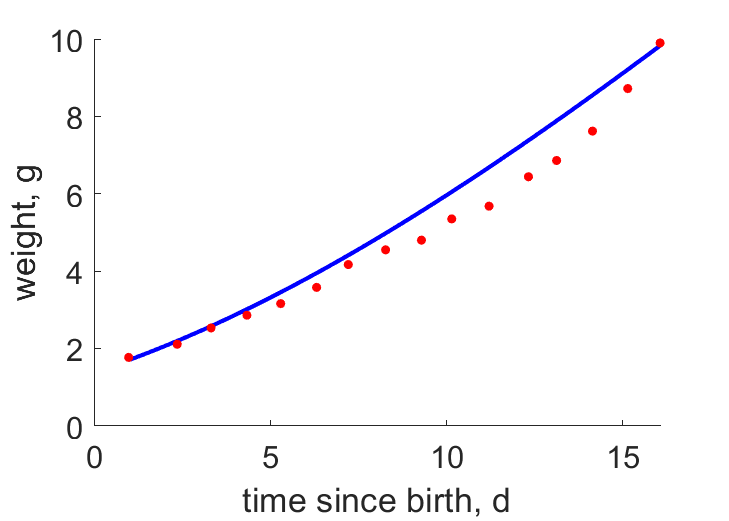 | time since birth | weight | (0.09483) | Migu1969 |
| tW3 | 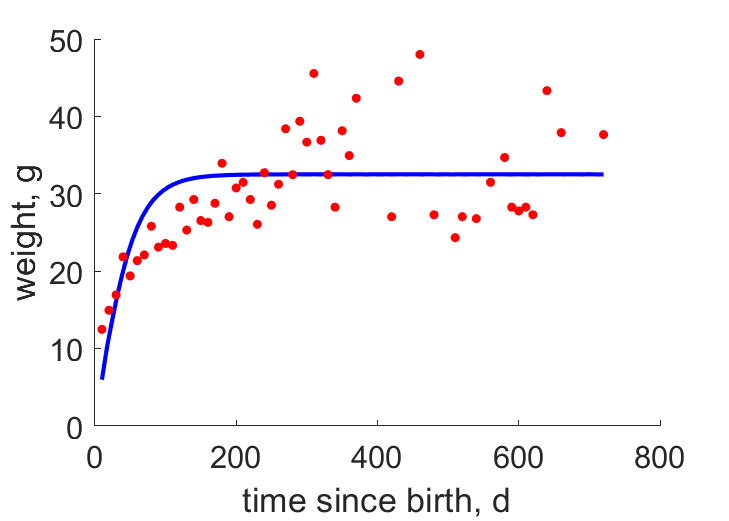 | time since birth | weight | (0.1641) | Bale2007 |
| tW4 | 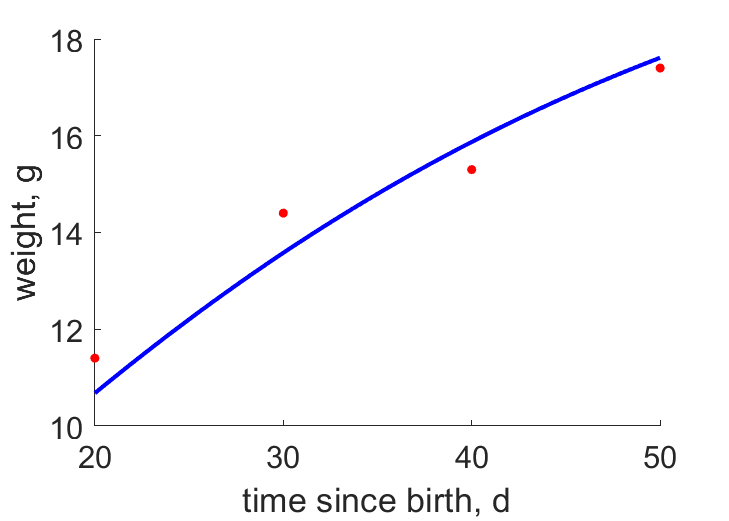 | time since birth | weight | (0.03985) | DrozGore1972 |
| tW5 | 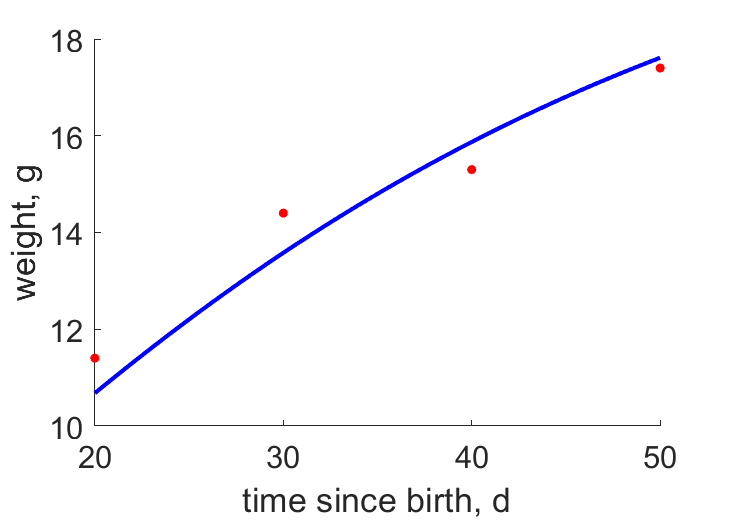 | time since birth | weight | (0.03985) | DrozGore1972 |
Pseudo-data at Tref = 20°C
| Data | Generalised animal | Microtus arvalis | Unit | Description |
|---|---|---|---|---|
| v | 0.02 | 0.08037 | cm/d | energy conductance |
| kap | 0.8 | 0.9821 | - | allocation fraction to soma |
| kap_R | 0.95 | 0.95 | - | reproduction efficiency |
| p_M | 18 | 478 | J/d.cm^3 | vol-spec som maint |
| k_J | 0.002 | 0.002 | 1/d | maturity maint rate coefficient |
| kap_G | 0.8 | 0.8001 | - | growth efficiency |
Discussion
- There is variability in reported timing of weaning and puberty;we assume that weaning and puberty happen at the same maturity level.
- We assume that f=1 during lactation but that it differs afterwards in the different studies;this assumption makes a difference
Facts
- Litter weight amounts to 53,2% of the mothers weight; female suckle her former litter during pregnancy. (Ref: Fran1956)
- Females mature after opening eyes and while still unweaned. So called suckling maturity. (Ref: BoycBoyc1988, Fran1956)
- Age at weaning/maturity earlier for solitary mother than mothers in groups. (Ref: BoycBoyc1988)
- most numerous rodent in field ecosystems in most of europe; might reproduce all year round in favorable conditions; most dangerous pest of the field cultures. (Ref: Migu1969)
- food uptake by females increases slightly during pregnancy while it increases drastically during lactation. (Ref: Migu1969)
Bibliography